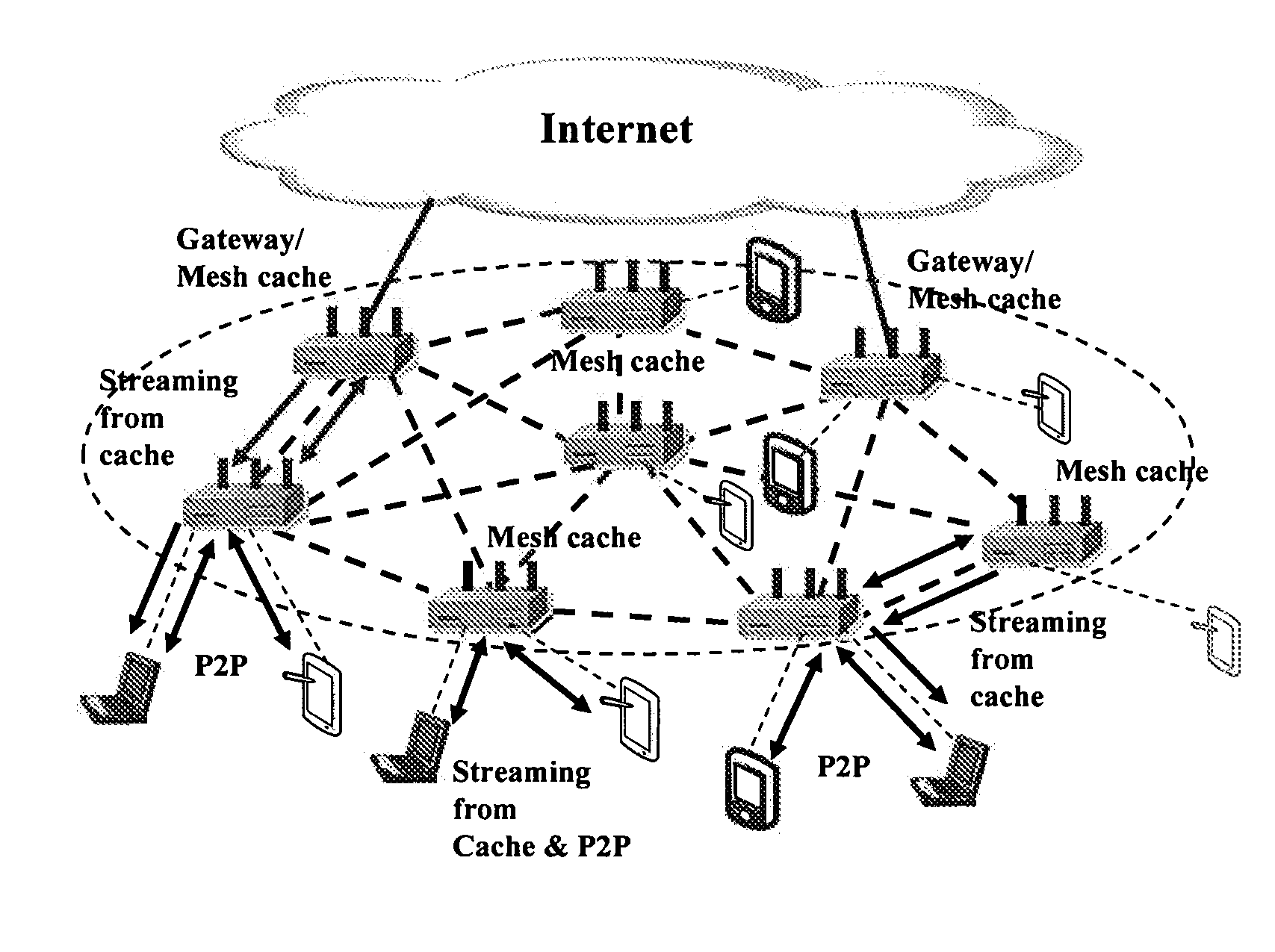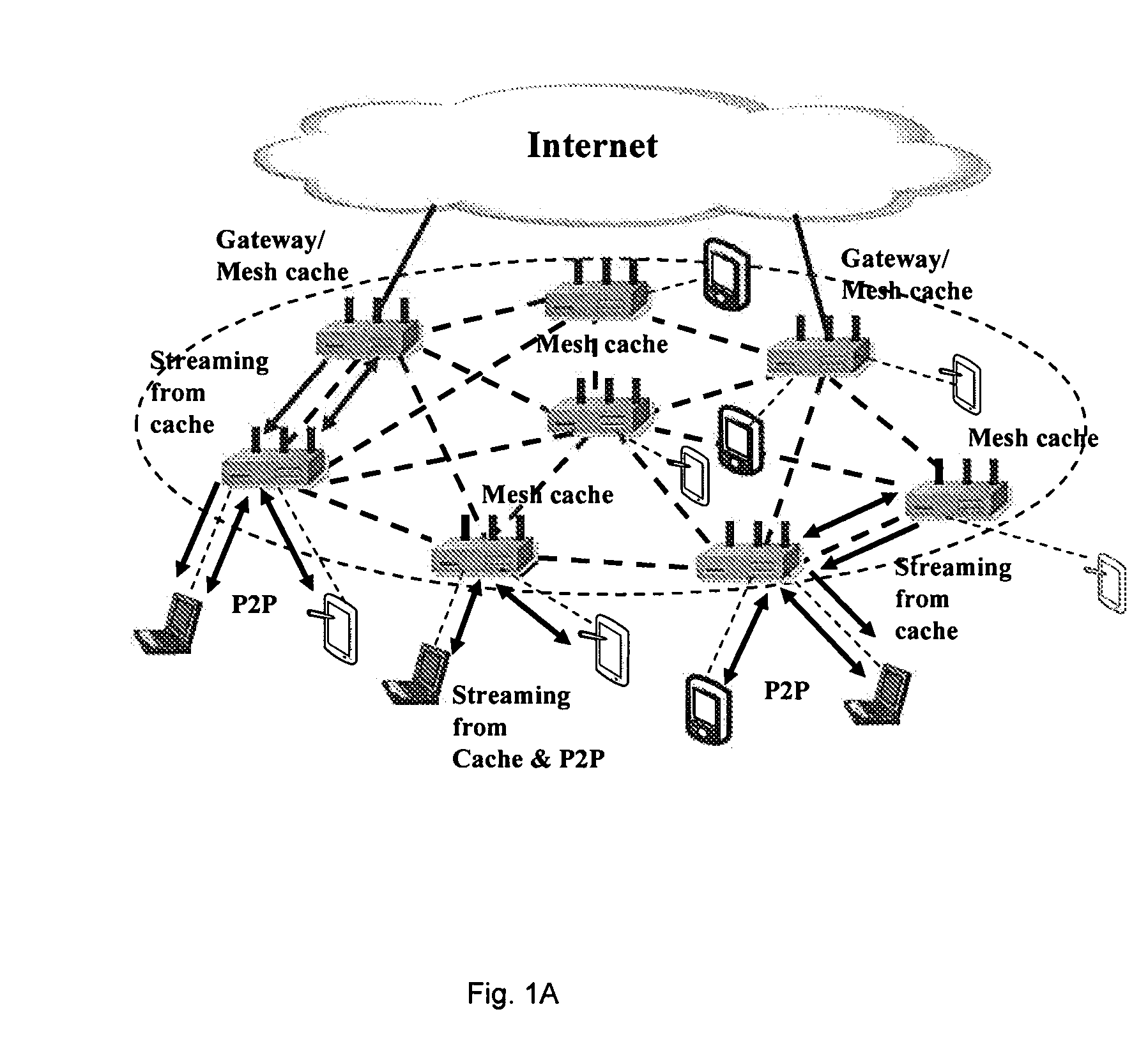Unified cache and peer-to-peer method and apparatus for streaming media in wireless mesh networks
a wireless mesh network and wireless mesh network technology, applied in data switching networks, selective content distribution, instruments, etc., can solve the problems of limited wmns capacity, difficult delivery of high-quality streaming services such as video-on-demand over multi-hop wireless mesh networks (wmns), and insufficient research on streaming services in wmns. achieve good scalability, reduce the number of relay transmissions, and improve performan
- Summary
- Abstract
- Description
- Claims
- Application Information
AI Technical Summary
Benefits of technology
Problems solved by technology
Method used
Image
Examples
Embodiment Construction
[0031]UNICAP differs significantly from existing Internet CDN schemes. In UNICAP, a client device can concurrently form a P2P relationship with mesh cache routers and other peer devices for best-effort downloading. It can also establish a client-server relationship with a mesh cache router for streaming. The mesh cache routers support both content streaming and P2P data downloading. It is important to note that the scheduling scheme for content streaming and P2P content fetching is different. Content streaming requires in-order on-time delivery. P2P content fetching may use a different dissemination policy among the peers. Furthermore, the network environment is different. In the Internet, the bottleneck is either at the server or at the client. In wireless mesh networks, the bottleneck may be within the network. Due to shared nature of the wireless medium, one content flow may interfere with another flow even if the two flows are from different mesh cache routers and do not pass th...
PUM
 Login to View More
Login to View More Abstract
Description
Claims
Application Information
 Login to View More
Login to View More - R&D
- Intellectual Property
- Life Sciences
- Materials
- Tech Scout
- Unparalleled Data Quality
- Higher Quality Content
- 60% Fewer Hallucinations
Browse by: Latest US Patents, China's latest patents, Technical Efficacy Thesaurus, Application Domain, Technology Topic, Popular Technical Reports.
© 2025 PatSnap. All rights reserved.Legal|Privacy policy|Modern Slavery Act Transparency Statement|Sitemap|About US| Contact US: help@patsnap.com



